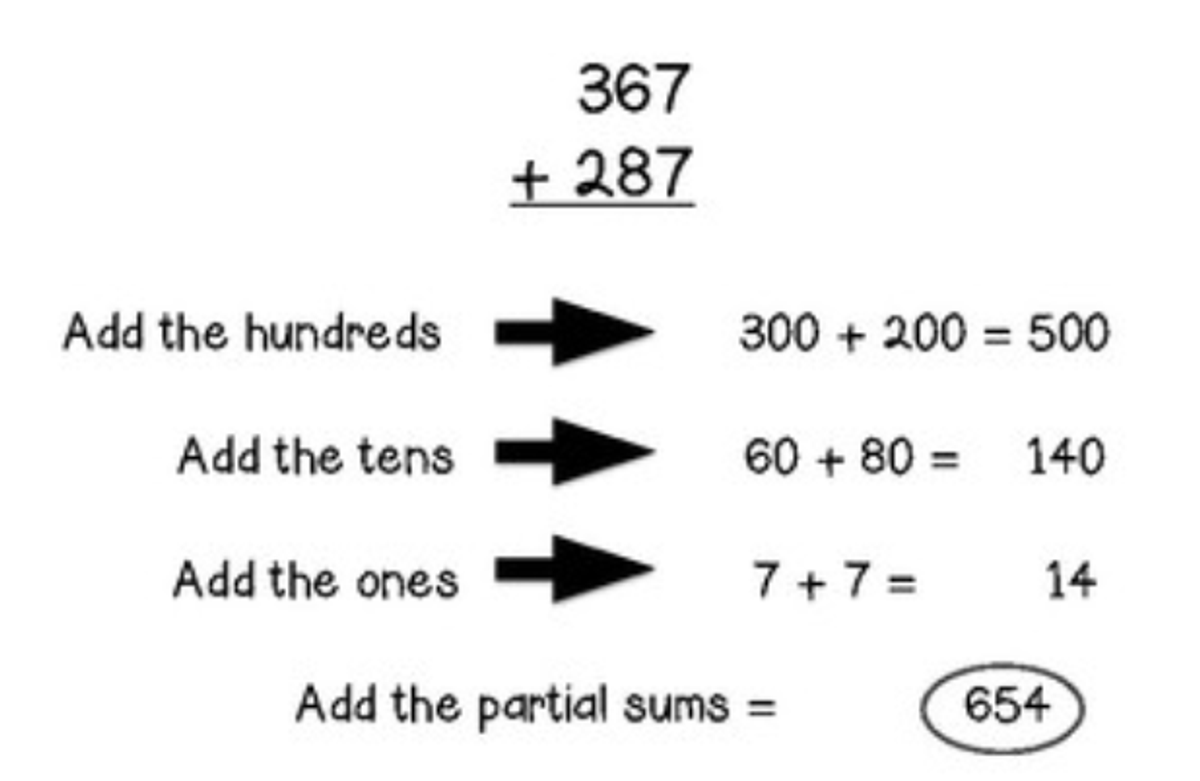Mathematics at ENPS

Developing additive strategies beyond the written algorithm
Algorithms have traditionally been taught as the ‘go to’ strategy to be used when solving problems around the four operations (adding, subtracting, multiplying and dividing). In the past, this was the most efficient method but now that technology is at our fingertips the ability to use strategies mentally and approximate answers is as important as ever.
The mathematics needed to complete the traditional written algorithm requires nothing more than adding one-digit numerals and little understanding of place value to correctly answer the algorithm. During Term Two and Three, ENPS students are being introduced to a variety of strategies that can be used when thinking additively. The algorithm is commonly the last strategy that is taught to ensure an extensive knowledge of thinking additively.
Each of these strategies are developed throughout primary school and students should be fluent in all strategies at the end of Year Six.
The strategies being inquired into include the following:
Addition Game
Salute
Years 2 - 6
Purpose:
- To reinforce the quick recall of basic facts: addition and multiplication.
You need:
- Pack of cards with the picture cards removed. (The aces act as 1.)
- Three players
How to play:
- Place the cards in a pile, face down.
- Two players pick up a card.
- Players do not look at their card but hold the card, facing out, on their foreheads in a “salute”.
- Player three adds the numbers on the two cards they can see and calls the answer.
- Player one and player two have to work out from the answer the value of the card on their forehead.
- The game is repeated with the players swapping their roles.
Variations:
- To begin the game you could select cards from 1- 5 to form the pack face down on the table. As children become familiar with the game you can add the higher numbers.
- You could extend this by multiplying the two numbers together instead of adding them and playing in the same way.
- You could extend the game with four players, three with a card on their forehead.
- Flip over two cards and create a two digit number.
- Play the game to practise multiplication facts.
Melissa Paola
Mathematics Learning Specialist and Year Six Teacher








